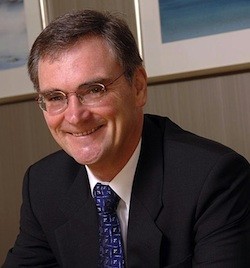
Australia has relaxed a proposed rule on high-frequency trading that would have imposed a minimum resting period for orders, following a consultation with market participants.
“ASIC’s taskforces on high-frequency trading and dark liquidity, and earlier work over the past two years, has seen an improvement in the awareness of these areas of trading, hence the move not to proceed with some rules at this time,” said Cathie Armour of the Australian Securities and Investments Commission.

Greg Medcraft, Australian Securities and Investments Commission
ASIC issued a consultation paper earlier this year that examined the impact of dark liquidity and high-frequency trading on Australia’s financial markets.
They paper was the result of analysis by an ASIC frequency trading taskforce set up to address concerns about disorderliness and unfairness.
High frequency trading involves complex mathematical algorithms to analyze and respond to market information and issue orders and cancellations at higher speeds than other traders.
“The practice of HFT has generated several public controversies regarding its ramifications for the transparency and fairness of market operations as well as its effects on market volatility and stability,” said Michael Wellman, professor of computer science at the University of Michigan, in a research paper.
Wellman called for replacing today’s auction-based markets with a discrete-time call market, in order to eliminate latency arbitrage opportunities and improves efficiency.
In a call market, each transaction takes place at predetermined intervals and all of the bid and ask orders are aggregated and transacted at once. The exchange determines the market clearing price based on the number of bid and ask orders.
“A call market prevents high-frequency traders from gaining a latency advantage, thereby increasing surplus for background traders,” Wellman said. “Aggregating orders over small, regular time intervals provides additional efficiency gains, and in fact these benefits appear to overshadow the gains attributable specifically to neutralizing latency arbitrage.”
While the ASIC HFT taskforce did not find systematic manipulation or abuse of markets by high frequency traders, it found that their trading strategies are commonly adopted by many other algorithmic traders, including institutions.
It was found that high-frequency trading in Australia is dominated by a small group of trading entities with the 20 largest entities accounting for about 80% of all HFT turnover (or 22% of total equity market turnover).
The HFT taskforce concluded that small and fleeting orders are impacting market integrity and efficiency and investor confidence, and that to minimize this impact, it is appropriate to require these orders to rest for a minimum amount of time in our markets.
It proposed to make a new rule requiring market participants to prevent small orders being cancelled or amended within 500 milliseconds of being submitted to the trading platform of a lit exchange market, and to prevent the cancellation or amendment of small orders within 500 milliseconds of being submitted to the trading platform of a lit exchange market.
However, in a May 2013 speech, ASIC chairman Greg Medcraft said: “We have already seen considerable lessening of noise created by small and fleeting orders, and said there will be even further improvement. Accordingly, ASIC has decided not to implement the proposal for a small order resting time, at this stage.”
Since March, Medcraft noted, small and fleeting orders have reduced by 55%–from 3.6 to 1.6% of all untraded orders. He attributed the drop to closer cooperation between the ASIC task force and market participants, as well as an educational awareness program about the impacts of algorithmic trading with the buy side.





